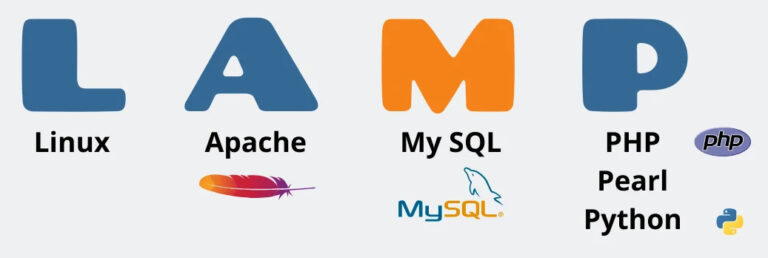Pimox Installation Guide to Harnessing ARM Power
The dynamic realm of virtualization continues to evolve, embracing a spectrum of architectures, from the conventional x86 to the burgeoning ARM landscape. Among the innovative projects pushing the boundaries is Pimox, an ARM-specific adaptation of the renowned Proxmox VE platform. In this exploration, we delve into the prowess of Proxmox VE, introduce the ARM-centric Pimox, and dissect the advantages, considerations, and comparisons between the two.
Proxmox VE stands tall as an open-source virtualization platform tailored for enterprise demands. Its feature-rich arsenal includes VM and container management, software-defined storage and networking, and high-availability clusters. The platform’s user-friendly web interface simplifies complex tasks, making it a staple in diverse IT environments.
As Proxmox VE dominates the x86 arena, Pimox steps into the limelight, offering an ARM-optimized counterpart. Built on Debian, Pimox utilizes specially compiled packages, ensuring compatibility with ARM processors. This move extends virtualization capabilities to the realm of low-power, high-efficiency devices.
Pimox presents several compelling advantages:
- Reduced Power Consumption: Leveraging ARM processors, boasting a lower power footprint, delivering substantial energy savings, particularly vital for edge computing and resource-constrained environments.
- Hardware Flexibility: widens hardware options, supporting ARM-based devices like Raspberry Pis. This flexibility broadens the applications of virtualization solutions.
- Open-Source Community: Inheriting Proxmox VE’s vibrant community ensures ongoing development, robust support, and access to a wealth of knowledge and resources.
While actively maintained, it’s crucial to recognize its ongoing development status. Although it inherits Proxmox VE’s core functionalities, advanced features may not be readily available. ARM processors, while power-efficient, may lag behind x86 counterparts in raw power, impacting performance for resource-intensive workloads.
Pimox Installation Guide for Raspberry Pi
This guide outlines two methods for installing Pimox, a port of Proxmox VE for ARM Devices.
Method 1: RPiOS64bit Interactive Automatic Installer
Requirements:
- Raspberry Pi or ARM Equivalent
- Internet connection via Ethernet
- RPiOS64bit image downloaded from https://downloads.raspberrypi.org/raspios_arm64/
Steps:
Flash and boot the RPiOS64bit image on your Device. Open a terminal window and switch to the root user
sudo -s Download the installation script
curl https://raw.githubusercontent.com/pimox/pimox7/master/RPiOS64-IA-Install.sh > RPiOS64-IA-Install.sh
Make the script executable
chmod +x RPiOS64-IA-Install.sh Run the installation script
./RPiOS64-IA-Install.sh Follow the on-screen prompts to complete the installation.
Method 2: Manual Installation
Prerequisites:
- Raspberry Pi with pre-installed Debian Bullseye 64-bit OS (not 32-bit)
- Static IP address configured for the Pi
- IPv6 addresses removed from /etc/network/interfaces
- Hostname set in /etc/hostname
- Hostname and static IP linked in /etc/hosts
- Kernel-headers installed
Steps:
Add Pimox repository to apt sources
echo "deb https://raw.githubusercontent.com/pimox/pimox7/master/ dev/" > /etc/apt/sources.list.d/pimox.list Import repository key
curl https://raw.githubusercontent.com/pimox/pimox7/master/KEY.gpg | apt-key add - Update apt package lists
apt update Install Proxmox VE
apt install proxmox-ve Important Notes:
- Use a locally attached console for installation, as network connections might be lost or reset.
- This repository provides precompiled Debian packages. For building from source, refer to the official Proxmox Git repository.
- Minimally patched sources for rebuilding are available on the GitHub repository.
- Back up important data before installation.
- Explore documentation and community forums for troubleshooting and further information.
- Stay updated with releases to benefit from new features and improvements.
Hopefully, By following this guide, you have a successfully install on your Raspberry Pi and unlock the potential of building versatile and efficient clusters. Use this code at your own risk.
Pimox marks a significant stride in diversifying virtualization across hardware architectures. Its amalgamation of open-source principles, low-power attributes, and ARM compatibility positions it as a valuable addition to the virtualization toolkit. As development progresses, Pimox is poised to play a pivotal role in ARM virtualization, catering to edge computing, resource-constrained scenarios, and users seeking an open-source ARM-based solution.
- Evaluate Use Case: Carefully assess your specific use case and hardware capabilities before choosing between Pimox and Proxmox VE.
- Community Engagement: Explore the active community for support, resources, and insights into ongoing development.
- Stay Informed: Keep abreast of advancements in the broader virtualization landscape to make informed decisions for your IT infrastructure.





